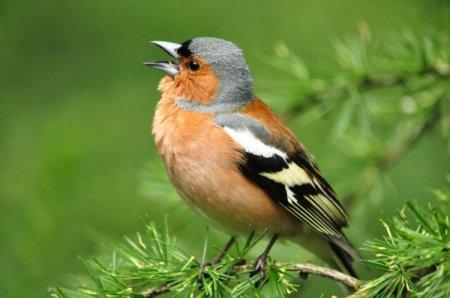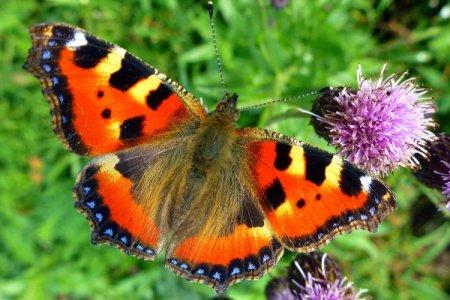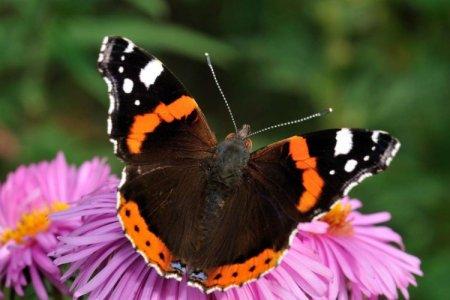
It is impossible to count how many legends and stories go around the nightingales and their amazing singing. But do you know what this adorable songbird really looks like? And how does she differ from her other fellow musical talents? Let's tell!
general description
After the sumptuous trills of the nightingale, many expect the same wow effect when the performer himself appears. In reality, the likelihood of spotting it among the branches and leaves is almost minimal. And in size it is slightly larger than a sparrow.
Appearance
An average nightingale weighs about 25 g and the length of its body does not exceed 20 cm. The shape of the body is rather graceful, elongated, with a long tail and pointed wings. On thin legs - long fingers with tenacious claws, thanks to which the nightingale deftly maneuvers on the branches.
Nightingales have dark eyes that are rather large in relation to the size of the head. The neck is wide, but very mobile.

Singing
Nightingales have very characteristic songs rich in different sounds. Having heard them once, it is no longer possible to confuse them with other songbirds. The best performer in the family is the common western nightingale.
They begin to sing at night almost immediately after returning from wintering and can continue until dawn. It's funny that the nightingale improves its musical talents as it gets older. Young individuals learn from adults and adopt their skills.

How many nightingales live
In the wild, nightingales live up to 4 years, and at home, with proper care, up to 7. At different times, nightingales have repeatedly been on the verge of extinction. In particular, because they were regularly caught because of their excellent singing.

Types of nightingales
All regional varieties of nightingales can be divided into just two categories: common and southern. We have common nightingales. They practically do not differ either in appearance or in singing. Unless the common ones have a lighter abdomen and more varied trills.

Lifestyle
Nightingales are considered not too smart, but at the same time they are very careful. For example, they do not settle where they can be attacked by snakes or birds of prey. In addition, they are real loners who hide both from people and from their relatives.
Habitat
Nightingales are common throughout Eastern Europe and Siberia, and in winter in East Africa. They settle almost everywhere: on forest edges, in dense bushes, groves and parks or near water bodies.

The diet
The basis of the nightingale's diet is insects of all kinds, from ants to earthworms and spiders. Birds hunt on the ground and skillfully seek out prey in the grass and among fallen leaves. Sometimes they hunt from a branch and may even chase their prey.

Wintering
In warm countries, nightingales lead a sedentary lifestyle, but the inhabitants of the northern latitudes are forced to fly away for the winter in search of warmth and food. By mid-April, nightingales return from wintering straight to green trees and awakened insects. At first, he can sing even during the day, until they form pairs.

Keeping in captivity
Loners by nature, nightingales do not adapt well to life with humans. It is almost impossible to tame it, and most often this leads to the fact that the bird will simply constantly beat against the bars of the cage and wither. If you need to feed a sick or injured bird, maggots, mealworms, grated carrots and special mixtures are suitable.

Reproduction of nightingales
In the second half of spring, the mating season begins for most species of nightingales. During this time, until the middle of summer, the couple manages to hatch two broods of chicks.
Nightingales camouflage themselves in bushes, grass and fallen leaves very close to the ground. Their nests are rather bulky, like bowls, and are lined with feathers and wool from the inside.One clutch contains up to 5 olive eggs, of which chicks hatch after 2 weeks. The male gets food at this time.
Nightingales grow up very quickly, and after less than 2 weeks they already independently disperse in different directions from the nest. The male takes care of the offspring for about a month, and the female is busy with the second clutch at this time.

Natural enemies
In addition to the fact that large birds of prey hunt nightingales, ferrets, martens, weasels and other nosy animals pose a serious threat to them. Because the nests are so close to the ground, they are often looted.

Nightingale - photo
Of course, the nightingale is not the most conspicuous and vibrant bird in the world. But we hope that thanks to our selection you will definitely not confuse him with anyone else!


























